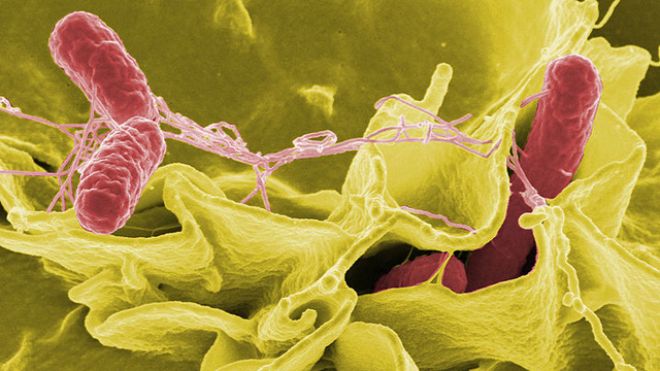In many ways, Desaray Carroll is a typical high school teenager. She texts nonstop, hangs out with her friends, goes to the movies and out to eat. The 19-year-old Coahulla Creek High School student is surrounded with a family and friends who love and support her, so much so they campaigned for the student body to elect her prom queen a few weeks ago. Everyone except Carroll seemed sure she would win. But after a lifetime of being picked on for being different, she never thought she could be the same as those around her. “At my old school, I got made fun of,” she said. “I didn't want to go to school. It was really hard. At one point I quit school, but I came back.” Carroll has cerebral palsy, a disorder that affects muscle tone, movement and posture. People with cerebral palsy can have exaggerated movements, rigidity of the limbs, involuntary movements, unsteadiness while walking or any combination of those symptoms. She struggles with her speech — though after a few minutes with her, she becomes easier to understand — and movements on the right side of her body. So going from the person being picked on to the point of quitting school to being given a title that comes with such an implication of popularity seemed like a stretch for her. When her name was called out on prom night announcing she had been named prom queen, Carroll was naturally and genuinely shocked. “I didn't believe it,” she said. “I really like it here. They don't look at me like I have cerebral palsy.” Carroll's friends and her teachers said they believe it is a great testimony to the student body at Coahulla Creek. “Their heart is in the right place,” said Josh Swiney, Carroll's math inclusion teacher. “They've been around her and wanted that for her. She's awesome.” Andy Toth, a sign language interpreter of the school and adviser to the sign language club, of which Carroll is a member, said he knew the student body was rallying for Carroll. “I prayed all weekend she'd get it since I couldn't vote,” Toth said. “She is a perfect pick for it. We've got a good student body. They're not caught up in stereotypes. We realize what's real.” As a very young girl, Carroll fit in with other children, including her foster family. “She was accepted by them, and they love her,” said Jennie Byars, Carroll's foster mother, who became her legal guardian in 1997. Byars had four children naturally, has adopted several and has even more that refer to her as “mom,” including Carroll. “I didn't want her when they first called me,” Byars said. “Then I thought, 'Why am I doing this if I can't help the ones that really need it?' When they brought her to me (when Carroll was 16 months old), I saw a handicapped child. But then I saw a girl with a lot of determination. She bonded with us quickly. After a couple of weeks, I didn't see her as handicapped.” Byars and her late husband, Slim, encouraged Carroll's independence from an early age. “I tried to let her do what she could,” Byars said. “They wanted to give her a walker, and I said, 'No. She doesn't need one.' They wanted to give her a board to talk for her, but I wouldn't let them. We treated her like one of the kids. I tried not to limit her. You have a tendency to want to coddle her, but she didn't want you helping her.” Byars spent many hours taking Carroll to physical therapy and working with her to make sure she could walk and talk and live a normal life. Byars believed in her daughter, pushed her where she needed to be pushed, and comforted her when she needed to be comforted. “Her therapist said she was stubborn, but I said she was determined,” she said. “If she hadn't been determined, she wouldn't be where she is now.” As a child, Carroll could only walk on flat surfaces, not inclines. But she used a mulch pile to learn to walk on an incline. “She was determined, struggled, but she climbed that mountain — in more ways than one,” said family friend Nancy Reynolds. Carroll says many things in her life have been hard. “But it could be worse,” she said. “It's hard talking, but when people get to know me, they understand me better.” She can't even pull her hair back in a ponytail because she doesn't have full use of her right hand. She knows she's made it as far as she has because of the support from her foster parents. “They've been there for me,” Carroll said. “I'm lucky to have them.” When Carroll hit middle school, she faced bullying. Her friends sat at her side talking about how they were all bullied throughout middle school and into their early high school years. Zenaida Torres remembers other students being especially mean to Carroll. The two became friends passing each other in the counselor's office where they went to talk through the problems they each faced. Three years ago Slim Byars died. Jennie Byars was diagnosed with stomach cancer soon after. (She recently had a PET scan, which came back clean of cancer.) Carroll hit a really hard time facing so many trials in just a few years. “She was really a daddy's girl,” Byars said. “These last two years (when she enrolled at Coahulla Creek), she has really come out of her shell. The kids are great. They're more accepting here.” Carroll said she changed her outlook on life and those who were mean to her after her dad died. That's when she found a strong faith in God. “I know God won't put me in anything I can't go through,” she said. Now if a student picks on her or if she's having an especially hard day, she simply “doesn't let it bother” her. She has been inspired by Nick Vujicic, a motivational speaker and author who has no limbs. He is a reminder to Carroll that she is not the only one who faces struggles or who is different. Her hope and positive outlook serves as an inspiration to not only the student body and faculty at Coahulla Creek, but to many who have met her. “Today I had a bad day,” Torres said. “She sends me excerpts from Nick Vujicic's book. It helps me a lot. Even though she had a bad day, she never got sad.” Carroll is someone Savannah McCraw looks up to and thinks more people should become friends with. “We had some classes together,” she said. “A lot of people are too shy to talk to her. I decided I wanted to get to know her. She's really an awesome friend. She always knows how to make me feel better.” Even if Carroll is having a terrible day, she is sweet and kind to everyone. “I never hear her say anything mean about anyone,” McCraw said. “You can never tell if she's having a bad day.” Carroll may struggle with some everyday tasks, but she possesses many traits her friends don't. “She's able to do stuff we're not able to,” Torres said. “She stays strong. She has people here that love her and support her.”source : http://www.foxnews.com/health/2013/05/13/student-with-cerebral-palsy-named-prom-queen/





